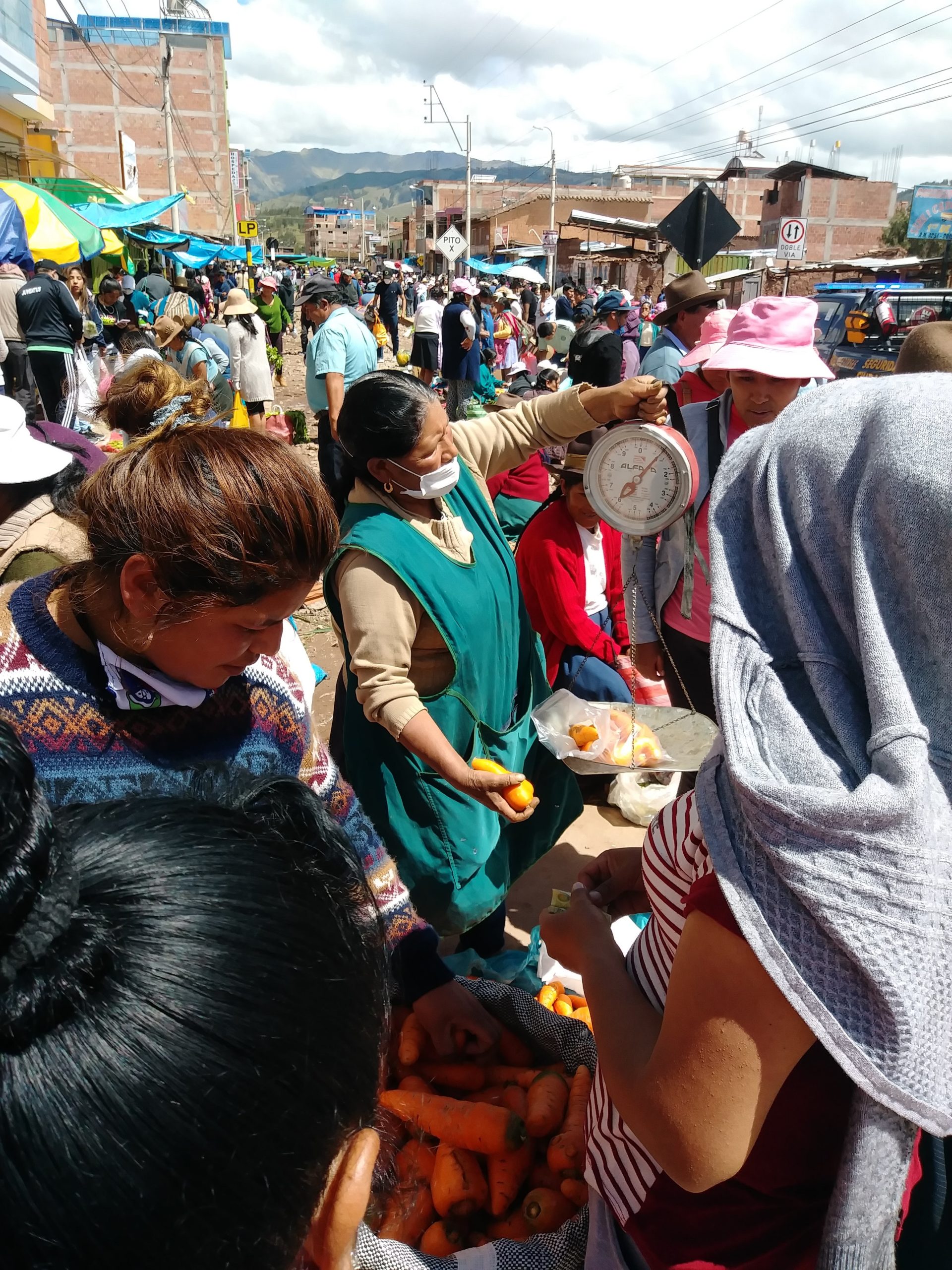Article begins
For decades, social scientists have, with notable exceptions, rued modernization’s seemingly inevitable transformation of rural lifeways. Statistics on rural to urban migration, along with visibly emptying communities, lent credence to this concern. Anthropologists long decried the inequity of this situation, citing how capitalist market forces (particularly the undervaluation of agricultural labor and products) pushed rural folk to urban areas which then benefited from their labor without investing in their education, health, or old age. More recent research has enriched understandings of urban-rural relations. Studies on remittances, for instance, have shown that the money flowing back to rural communities from urban migrants plays a pivotal role in renewing cultural practices affected by lack of resources.

Image description: A crowded market scene outdoors. At the center is a woman wearing a face mask weighing out produce with a metal scale.
Caption: Crowded makeshift marketplace in the Izcuchaca, Anta, Cusco. Lucía Isabel Stavig
These decades of research yielded perceptive and critical assessments of the challenges facing rural life. At the same time, some of these portraits gravitated toward certain path dependence, an assumption that the trend toward urbanization and modernization was an unstoppable given. There was a sadness underlying some of this work, too. Perhaps it came from a concern that, along with the loss of a way of life, urbanization would result in the loss of communal ways of relating. But this sadness also revealed a certain hubris: we knew what was inevitably coming, even if the people we were working with did not. As I began my fieldwork in rural communities in the Department of Cusco, Peru in September of 2019, I too lamented the number of middle-aged men and young people leaving to work in Cusco and beyond. Maybe there was no way but toward the city and modernity.
Then COVID-19 hit.
In the first two weeks of quarantine, the population of the rural community I was living in almost tripled as entire extended families came home from the cities of Cusco, Lima, Arequipa and beyond. Many rural migrants to the city live hand-to-mouth, buying the day’s food with the day’s wages. With cities at a complete standstill, migrants who worked in the informal sector were hard hit. As one person put it, “In the city, if you don’t work, you don’t eat.”
How can these observations from Peru help us reassess the relationship between urban and rural communities more generally?
Rural communities were also affected economically. Far from being isolated, these communities are deeply tied into the global economy. According to the mayor of the rural district in which I was living, a full 40 percent of residents worked in the now struggling tourist trade. But while this loss of income will affect families’ ability to educate children or pay ordinary medical expenses, it does not seem that it will affect their ability to feed themselves. This is a big difference that comuneros (rural community members) note between their situation and that of city dwellers. “Here we have potatoes, fava beans, corn, wild mustard, and guinea pig. What will they eat in the city?”
Though thousands of urban migrants have made their way home, many more have found themselves stuck in urban centers. Rural communities have responded to their compatriots’ predicament with ayni, or the practice of mutual aid. During the 115-day quarantine, mayors of rural districts all over Peru organized trucks to take food to urban migrants. In the district where I lived, people lined the streets, anxious to send sacks of agricultural products to their families in Lima. In an odd reversal in which income from the city made staying in the countryside possible, it is currently the countryside that is sustaining immigrant life in the city.
But is this an “odd reversal” after all? It took a pandemic to reveal just how robust the reciprocal relationship between urban and rural communities continues to be. Even before the pandemic made this web of ties clear, I had come to question my attachment to the narrative that rural life and ethos was inevitably lost. While it is the case that low agricultural prices, lack of land, and desires for higher education push many rural community members to the city, I had also noticed that many young people who leave to work come back to farm and raise families; that many “urban” members of the family come home on Sundays or to help with planting and harvesting; that while studying in the city, many college-aged siblings take turns so that someone is always home to help.
How can these observations from Peru help us reassess the relationship between urban and rural communities more generally? My experience has pushed me to see this relation as less of a one- or two-way street and more as rhizomatic: a web of countless small, yet meaningful connections. In urban migrants, rural communities’ “social skin” expands to include urban centers. Thousands of kilometers are no match for relations of care of which ayllu, or community, are made.
Lucía Stavig is a doctoral candidate in the department of anthropology at the University of North Carolina at Chapel Hill.
Cite as: Stavig, Lucía. 2020. “Rural to Urban and Back Again in Peru.” Anthropology News website, September 1, 2020. DOI: 10.14506/AN.1479

